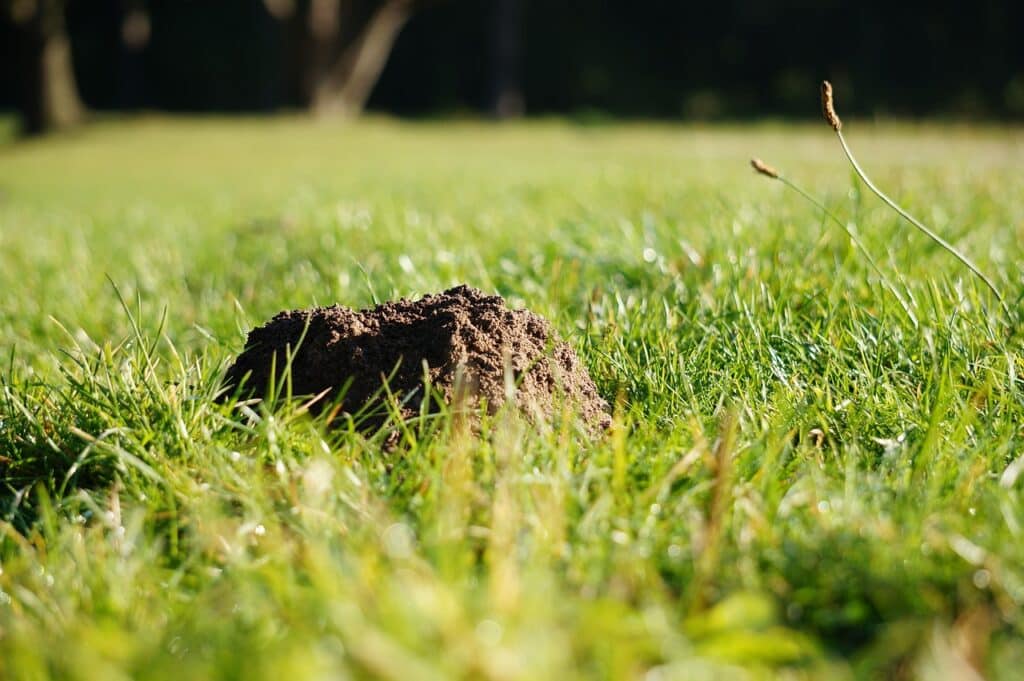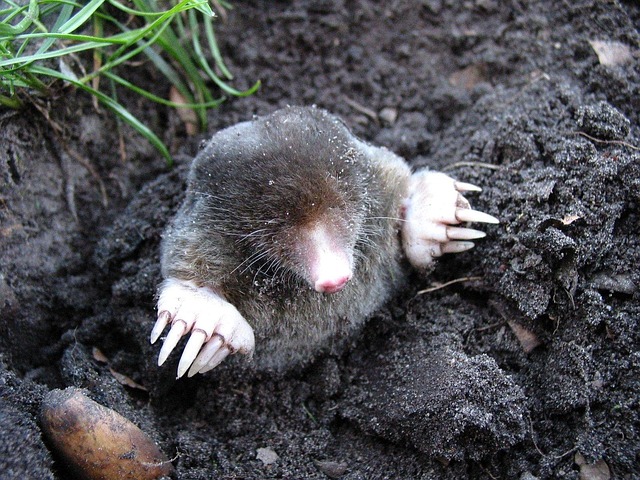

What are moles?
Moles are small, burrowing mammals that live almost their entire lives underground.
Size: Typically 12–15cm long.
Appearance: Velvety dark fur, pointed snout, small hidden eyes, and large spade-like forepaws for digging.
Diet: Carnivorous – they feed mainly on earthworms, grubs, and other soil-dwelling insects. They are not interested in eating grass or plant roots.
Lifestyle: Solitary creatures with large underground tunnel systems. They are active year-round, but activity often increases in spring and autumn when soil conditions are ideal.


How do they get there?
Moles move into a lawn when:
Food is plentiful – A high earthworm population is an open invitation.
Soil is easy to dig – Moist, well-drained, and healthy soil is ideal.
They are expanding territory – Young moles leave their birthplace in search of their own area.
Seasonal changes – Heavy rain or drought can drive moles to seek new ground.
They can dig new tunnels at a rate of up to 4 metres per hour, so they can establish themselves very quickly.
What issues do they cause?
While moles themselves don’t eat your grass, their digging can cause:
Molehills – Mounds of loose soil pushed to the surface, spoiling lawn appearance.
Surface ridges – Raised areas where tunnels run just beneath the surface, leading to uneven ground.
Root disturbance – Grass roots can be severed or exposed, leading to patchy growth.
Secondary weed invasion – Bare soil from molehills is perfect for weed seeds to germinate.
Damage to machinery – Soil and stones from molehills can blunt mower blades.
How to tell if you have moles
Signs include:
Fresh molehills (loose, crumbly soil piles).
Raised surface ridges in moist conditions.
Spongy ground where tunnels run below the surface.
A sudden appearance of multiple hills in a short space of time.
How to get rid of moles
Control methods fall into two categories: humane deterrence and lethal control. In the UK, moles are not protected species, but animal welfare laws still apply.
Humane deterrence:
Reduce food source: Certain lawn treatments can temporarily reduce earthworm numbers, making your lawn less attractive.
Ultrasonic devices: Emit vibrations/noise underground to encourage moles to move elsewhere (effectiveness varies).
Castor oil-based repellents: Applied to the soil to make it less appealing.
Flooding tunnels: Can drive them out temporarily, but often impractical on larger lawns.
Lethal control:
Scissor traps / half-barrel traps: Placed in active tunnels. Must be checked daily.
Professional molecatcher: A licensed pest controller can ensure quick and humane removal.
Repairing lawn damage
Once the mole is gone:
Remove molehills – Use a rake to spread the soil or remove excess.
Level tunnels – Firm down raised ridges with your foot.
Overseed bare areas – Fill gaps with quality lawn seed.
Regular maintenance – Scarification, aeration, and feeding help restore turf.
